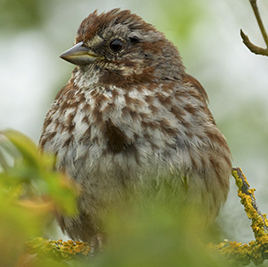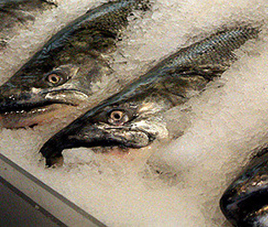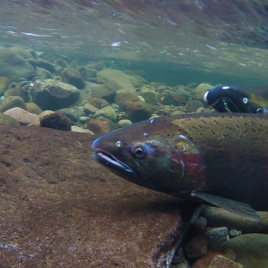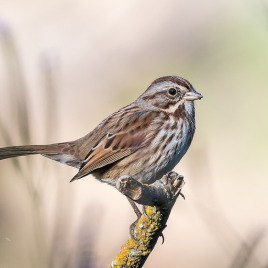Raising the price of cigarettes benefits lower income people. In this study, researchers examined the impact of a 50 per cent increase in the cost of cigarettes on health, poverty, and financial protection in 13 middle-income countries. They found that higher tobacco prices provide more health and financial gains to the poorest 20 per cent […]
Marine heatwaves on the rise
Annual marine heatwave days have increased by 54 per cent from 1925 to 2016, accelerating since 1982. Between 1925‒1954 and 1987‒2016, marine-heatwave frequency increased globally by 34 per cent and lasted 17 per cent longer. Researchers attribute this to a global increase in mean ocean temperatures and suggest that we can expect a continued global increase […]
Homo sapiens in Arabia by 85,000 years ago
A Homo sapiens fossil uncovered in the Arabian desert is estimated to be at least 85,000 years old—the oldest human fossil found to date outside of Africa and the Levant. The fossil finger bones were unearthed at Al Wusta, in Saudi Arabia. Original paper published April 9, 2018 Canadian co-author: Jay Stock, University of Western Ontario – jstock8@uwo.ca
Childhood traumatic brain injury may lead to ADHD
This study examined potential development of secondary attention-deficit/hyperactivity disorder (ADHD) five to 10 years after children have experienced traumatic brain injury, compared to a control group of children who had sustained orthopedic injuries. Researchers found severe brain injury is associated with increased risk of developing ADHD. They suggest children who experience traumatic brain injury be monitored […]

Fluctuating patterns in birds’ nesting success revealed
Researchers examined 39 years of data about a British Columbia population of Song Sparrows to identify patterns in how and why nesting success changed over time. The researchers found that factors such as rainfall, population density, and nest parasitism interacted in complex ways, with their effects waxing and waning, and that inbreeding became a significant […]

New approach for buyers and sellers to identify sustainable salmon
Because adult salmon return to the rivers where they were reared to reproduce, origin river is a key to a salmon population’s status. A new framework for certifying wild salmon allows individual retailers to develop criteria for certification based on specific salmon-bearing rivers. The criteria emphasize the identity and abundance of the river-specific salmon stocks […]
WATCH NOW | SMCC Webinar: New Depression Treatment Guidelines
Introducing a new and unique Patient and Family Guide To Depression Treatment – written in plain language BY individuals from across Canada who have personal experience with depression, FOR persons living with depression. Sponsored by the Ontario Brain Institute. Watch it now

Largest Chinook salmon disappearing
The largest and oldest Chinook salmon have mostly disappeared along the West Coast, according to a new study. Researchers analyzed nearly 40 years of data from hatchery and wild Chinook populations from California to Alaska. Canadian co-author: Daniel E Schindler, University of Washington – deschind@uw.edu Original paper published February 27, 2018

Stress affects songbirds’ ability to understand changes in songs
Songbirds living near oil and gas fields in Canada’s prairies adapt to noise by changing the pitch and volume of notes in their calls, but stress affects how well other birds in the species understand them. In this first study to look at the interaction between stress and behaviour in birds at oil wells, researchers […]

Local pollution affects gene expression
Pollution beats genetic ancestry when it comes to turning genes on or off. Researchers assessed environmental exposures, health, gene expression, and whole-genome variation in 1,000 Quebec residents. They found environmental factors had greater affect on gene expression profiles in blood samples than genetic backgrounds did. Local air pollution controls genes for heart, metabolic, and respiratory […]

Technique brings objects hidden around corners into focus
An efficient image-processing algorithm developed in part by a Canadian researcher advances the field for producing images of objects hidden from view. Processing light pulses that reflect off surfaces around corners and back again, the algorithm untangles the paths of the captured photons and reconstructs sharper images. The system is ready to be integrated with […]

Diamond reveals Earth’s inner secrets
A diamond containing a never-before-seen form of calcium silicate (CaSi03) and traces of titanium sheds light on the composition and dynamics of the Earth’s inner workings. Although scientists have theorized that this form of CaSi03 is widespread within the planet, the mineral remains stable at only extremely high pressures—such as those found at depths […]

Sparrows’ song might help determine health of potential mates and compatibility 
Complexity of a male bird’s song can help attract the most compatible mate, new research suggests. Researchers investigated whether song repertoire and complexity advertises the singer’s genetic dissimilarity to others in the population — something that could help a couple raise the most viable young. A male bird’s health influences how well it can learn […]
How climate change alters competition for food in the Arctic 
Competition between belugas and Greenland halibut in Cumberland Sound in the Arctic has changed with the climate. Belugas and halibut are considered intraguild predators, i.e. predators that feed on one another to reduce competition for resources. Researchers have tracked predation between the two species over a 30-year period. Their findings show that the belugas consume […]
New method uses over 200 years of data to track early bloomers 
There’s now a tool to find out whether your flowers are blooming unusually early in the season. Thanks to scores of data recorded by both researchers and citizen scientists, the new statistical estimator contrasts the time a flower bloomed over the past two centuries to observation in the present day. Study authors say that their […]
Exercise can prevent falls in the elderly 
Regular exercise and consistent vision treatment in elderly patients can help prevent falls, which are the leading cause of injury among this age group. These findings come from a meta-analysis of 54 randomized clinical trials involving almost 42,000 people and 39 interventions. The data suggest that gentle exercise, such as tai chi, can decrease the […]
